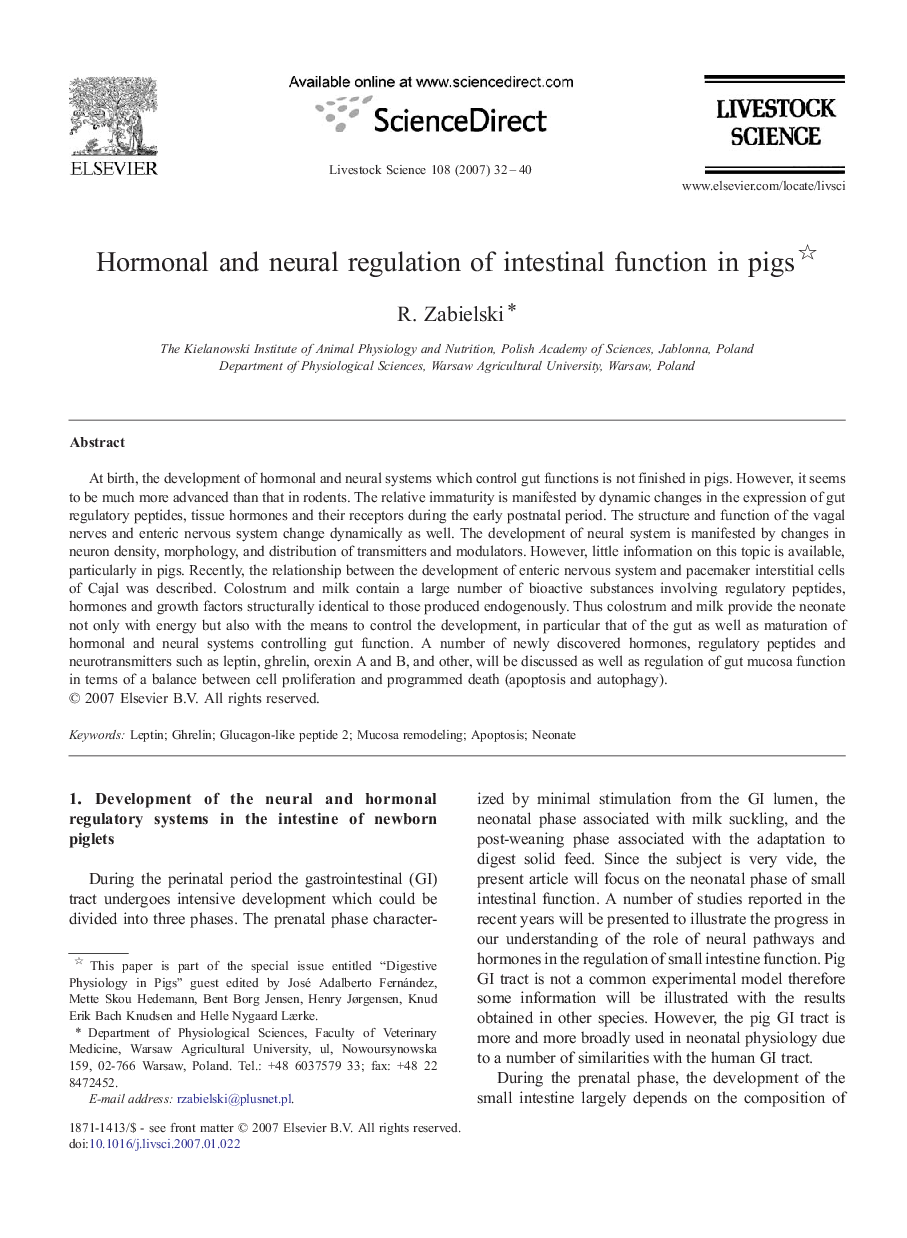| Article ID | Journal | Published Year | Pages | File Type |
|---|---|---|---|---|
| 2448748 | Livestock Science | 2007 | 9 Pages |
At birth, the development of hormonal and neural systems which control gut functions is not finished in pigs. However, it seems to be much more advanced than that in rodents. The relative immaturity is manifested by dynamic changes in the expression of gut regulatory peptides, tissue hormones and their receptors during the early postnatal period. The structure and function of the vagal nerves and enteric nervous system change dynamically as well. The development of neural system is manifested by changes in neuron density, morphology, and distribution of transmitters and modulators. However, little information on this topic is available, particularly in pigs. Recently, the relationship between the development of enteric nervous system and pacemaker interstitial cells of Cajal was described. Colostrum and milk contain a large number of bioactive substances involving regulatory peptides, hormones and growth factors structurally identical to those produced endogenously. Thus colostrum and milk provide the neonate not only with energy but also with the means to control the development, in particular that of the gut as well as maturation of hormonal and neural systems controlling gut function. A number of newly discovered hormones, regulatory peptides and neurotransmitters such as leptin, ghrelin, orexin A and B, and other, will be discussed as well as regulation of gut mucosa function in terms of a balance between cell proliferation and programmed death (apoptosis and autophagy).
